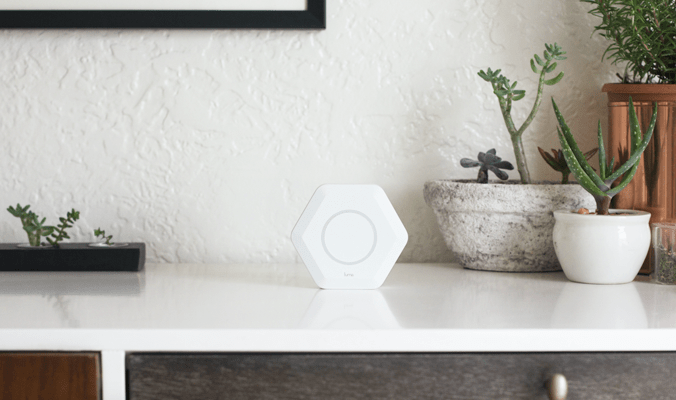Finally, companies have begun to recognize a long overlooked opportunity to develop a next-generation router that looks sleek and is far more user-friendly than the networking hardware of yesteryear.
Some contenders are the established companies themselves, including Asus, D-Link and Netgear, all of which have now have bells and whistles like parental controls, the ability to prioritize traffic based on network and device, and apps that help users repair their home network via smartphone or tablet.
Newer entrants, including Google’s new OnHub router and two-year-old Eero, feature both more elegant designs and far greater ease of use, though OnHub gets mixed performance reviews. Meanwhile, Eero strongly suggests that users buy more than one, which can quickly become expensive. (The company says that each router covers roughly 1,000 square feet. A three-pack of Eero units costs $499.)
Atlanta-based Luma may give them all a run for their money.
For one thing, like the Eero, Luma’s glossy WiFi routers look like something Apple might have come up with. Luma, which works best when sprinkled around the home as with Eero, also offers more coverage and is more affordable by design. Individual, $149 units cover roughly 1,500 square feet, and a three-pack costs $299. (Originally, two-year-old Luma planned to feature pricing similar to Eero: $199 per unit and $499 for a three-pack.)
Perhaps most important, especially to parents: Luma features the kind of network controls you might find at a large company. That’s because founders Mike Van Bruinisse and Paul Judge have forged their careers by solving complex networking and security problems at big enterprises, including their earlier company CipherTrust, acquired by Secure Computing, and their company PureWire, acquired by Barracuda.
Indeed, while Eero in particular is focused largely on the speed and reliability benefits of wireless mesh networks, Luma emphasizes advanced security and control features that make it easy to keep one’s network (and kids) safe and secure.
Want to rest assured that your kid sees only G-rated content online? There’s a setting for that on your Luma phone app. Want to turn off your WiFi during dinner hours? You can do that, too (including remotely). You can also see everyone who is on your network and revoke someone’s access with little more than a swipe.
Certainly, it’s not all over for the competition. It’s worth noting that Eero has said that granular device-level permissions are coming soon. (OnHub doesn’t feature them yet, either.)
Eero, which is probably Luma’s most direct rival, is also in the market already, and customers love the product. More than 450 Amazon reviewers have collectively given the company a four-and-a-half star rating. Meanwhile, Luma is still taking pre-orders (30,000 and counting). Its first routers won’t hit customers’ homes until June.
Eero has also raised a lot of money: $40 million between its seed and Series A rounds, including from Redpoint Ventures, Shasta Ventures (an early investor in Nest Labs), and Playground Global, the venture fund of Andy Rubin, who co-created both the mobile computing companies Danger and later Android.
Luma has an apparent ace up its sleeve, however. Following a $3.5 million seed round closed last year — money that came from Relay Ventures and Felicis Ventures, among others — Luma has just closed on $12.5 million in Series A funding.
The money comes from Accel Partners. The funding was also co-led, notably, by retail giant Amazon, whose Echo voice-controlled home speakers have clearly struck a chord with consumers.
In an interview with Van Bruinisse and Judge yesterday, the duo declined to answer whether Amazon’s investment means Luma will receive billing over Eero and other routers on Amazon, which is the only place where shoppers can order the units currently, aside from Luma’s site.
But they say that Luma is integrating with Amazon’s increasingly popular Alexa product, so users will be able to give voice demands to their Echo to “pause the Internet” if they want their children to stop playing with their phones, for example.
They also tell us that Amazon has curated a large amount of child friendly content in partnership with Disney and PBS Kids, and that it’s working on creating a kid-specific channel within Luma where those sites will be featured. (It could be another selling point for homes with children.)
Now, Luma just has to get the products, which are designed to stand vertically and outfitted with two gigabit ethernet ports and one USB 2.0 port, into users’ hands.
We’ll see how things go from there.
